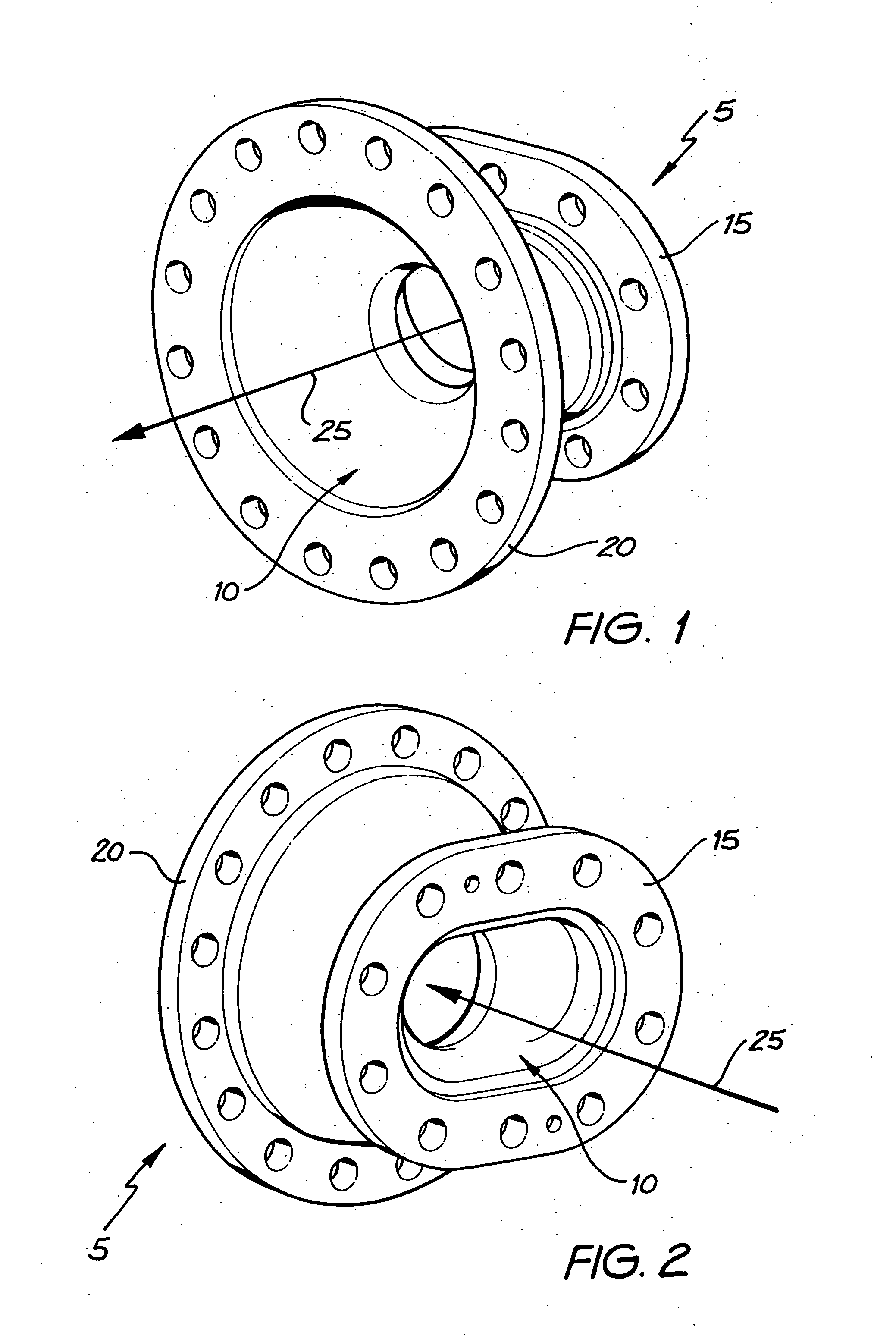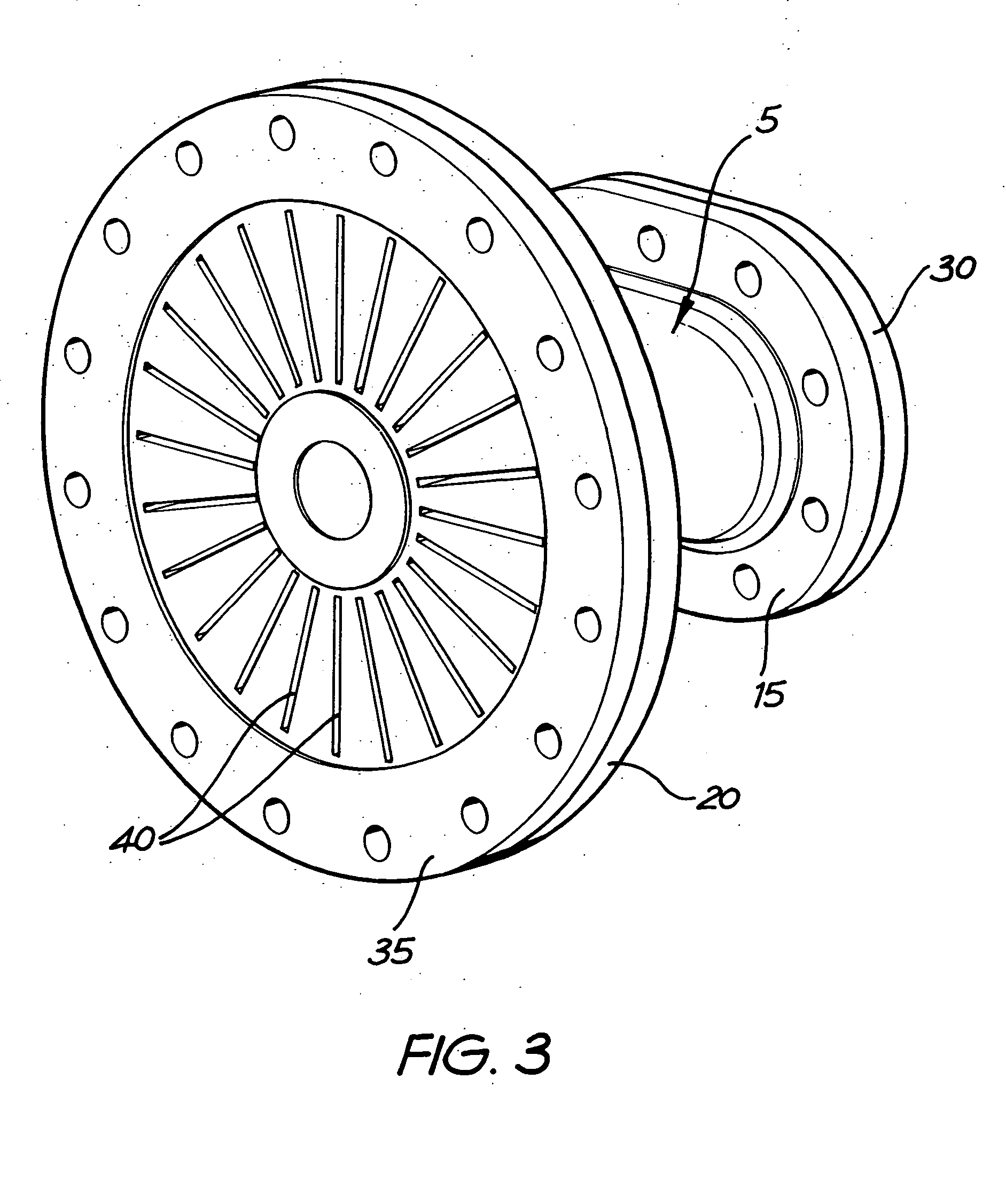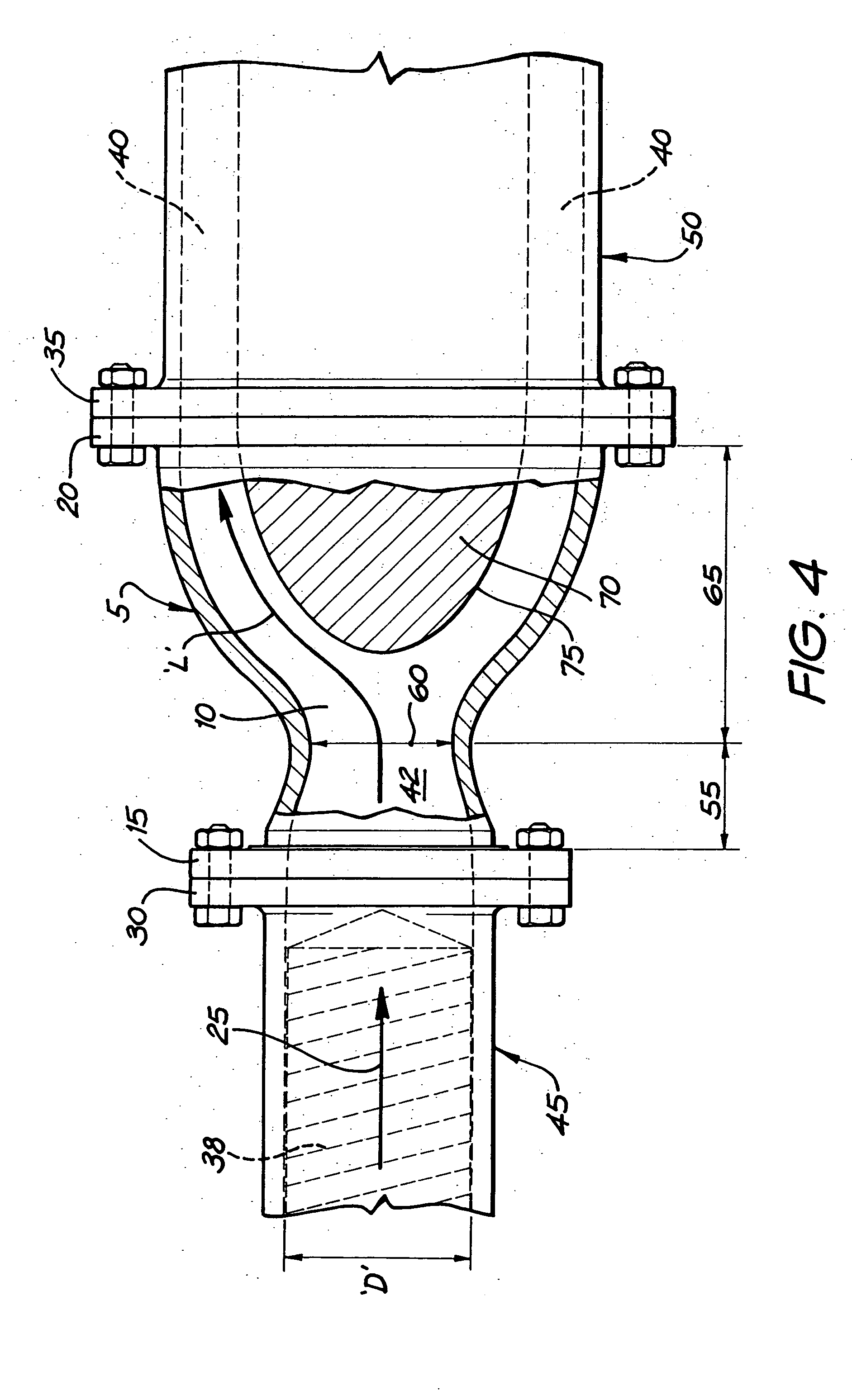Flow distributor device for an extruder
a distributor device and extruder technology, applied in cocoa, application, food preparation, etc., can solve the problems of inability to cope with the higher extrudate flow rate, inability to achieve the effect of increasing and reducing the cost of production, so as to achieve the effect of increasing the length and volume, substantially unidirectional laminar flow, and increasing the overall extrudate throughpu
- Summary
- Abstract
- Description
- Claims
- Application Information
AI Technical Summary
Benefits of technology
Problems solved by technology
Method used
Image
Examples
Embodiment Construction
[0025] Turning first to FIG. 1, there is depicted a flow distribution device 5, consisting of an extrudate passage 10, defined by an internal surface of curvilinear profile, an extruder-connection flange 15 and a cooling die connection flange 20. It will be noted that, when in operation, extrudate 42 will enter the device 5 via the extruder connection flange 15, travel through the device 5 in the direction of the arrow 25 and will exit the device 5 and pass into the cooling die 50 via the cooling die connection flange 20. Turning to FIG. 2, the same features are shown from the opposite end of the device 5.
[0026] The flow distribution device 5, in practical operation, is directly connected to the outlet of a twin-screw conveying food extruder 45, for example of the type marketed by Buler AG, of 9240 Uzwil, Switzerland, via said extruder's outlet flange 30. It is similarly connected to a multi-channel cooling die 50, whose extrudate flow channels 40 are arranged radially about a circ...
PUM
| Property | Measurement | Unit |
|---|---|---|
| Flow rate | aaaaa | aaaaa |
| Diameter | aaaaa | aaaaa |
| Length | aaaaa | aaaaa |
Abstract
Description
Claims
Application Information
 Login to View More
Login to View More - R&D
- Intellectual Property
- Life Sciences
- Materials
- Tech Scout
- Unparalleled Data Quality
- Higher Quality Content
- 60% Fewer Hallucinations
Browse by: Latest US Patents, China's latest patents, Technical Efficacy Thesaurus, Application Domain, Technology Topic, Popular Technical Reports.
© 2025 PatSnap. All rights reserved.Legal|Privacy policy|Modern Slavery Act Transparency Statement|Sitemap|About US| Contact US: help@patsnap.com



